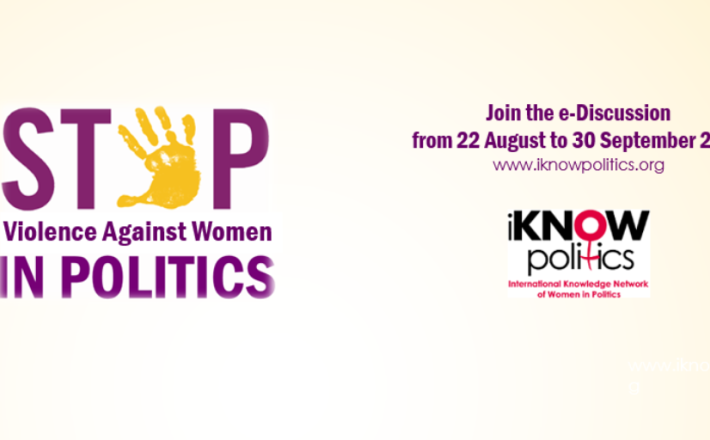Violence Against Women in Politics
|
Recently, elected women from France, Canada, Scotland and Israel, to name a few examples, publicly condemned misogynist and violent political cultures. Not only did they expose acts of harassment and violence in politics, they made the case that violence should not be the price of participating in politics. Violence against women in politics (VAWP) limits women’s political opportunities and discourages or prevents them from exercising their political rights, including their rights as voters, candidates, party supporters or public officials. |
VAWP can occur during electoral campaigns, but not only: as women assume various political positions, they may, for example, be pressured to resign from their posts on the basis of gender, or verbally threatened or intimidated because they are women in politics; and VAWP may take many other forms, including in sexist stereotypes and images portrayed in the media, which, particularly in the digital age, focus on women’s bodies, sexuality and traditional social roles, rather than their competence, capacity and contributions as leaders. |
|
Please click here to read the full concept note of this e-Discussion. Click here to access the consolidated reply. This e-Discussion seeks to bring the experiences of the iKNOW Politics community into this growing dialogue on VAWP. Please join us in the e-Discussion from 22 August to 16 October 2016. Questions
Please note that there are different options to send your contributions:
|
|
288

|
Recently, elected women from France, Canada, Scotland and Israel, to name a few examples, publicly condemned misogynist and violent political cultures. Not only did they expose acts of harassment and violence in politics, they made the case that violence should not be the price of participating in politics. Violence against women in politics (VAWP) limits women’s political opportunities and discourages or prevents them from exercising their political rights, including their rights as voters, candidates, party supporters or public officials. |
VAWP can occur during electoral campaigns, but not only: as women assume various political positions, they may, for example, be pressured to resign from their posts on the basis of gender, or verbally threatened or intimidated because they are women in politics; and VAWP may take many other forms, including in sexist stereotypes and images portrayed in the media, which, particularly in the digital age, focus on women’s bodies, sexuality and traditional social roles, rather than their competence, capacity and contributions as leaders. |
|
Please click here to read the full concept note of this e-Discussion. Click here to access the consolidated reply. This e-Discussion seeks to bring the experiences of the iKNOW Politics community into this growing dialogue on VAWP. Please join us in the e-Discussion from 22 August to 16 October 2016. Questions
Please note that there are different options to send your contributions:
|
|
288